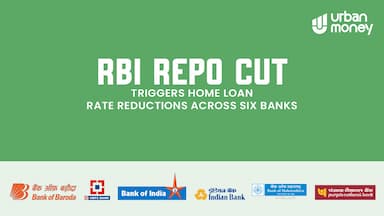50 Lakh Home Loan - Calculate EMI
For buyers looking at mid-sized flats in city extensions or upcoming localities, ₹50 lakh home loan often hits the sweet spot. It’s a figure that works for people who want decent space without taking on a heavy repayment load. This amount is also popular among those building their own homes on family land or contributing to a joint purchase. With clean paperwork and a stable income, most lenders process this range fairly quickly.
- Personalized Home Loan solutions
- Expert guidance
- Application assistance
- Credit score discussion
- Home Loan Interest rate comparison
50 Lakh Home Loan EMI Calculator
- 5 Lac
- 20 Cr
- 5
- 30
- 6
- 20
Monthly Loan EMI
Payment Breakdown:
Principal Amount
₹50,00,000
Interest Payable
Total Amount Payable
Table of Content


Last Updated: 15 December 2025
50 Lakh Home Loan EMI For 5 Years
The following table includes the EMI for 50 lakhs home loan for 5 years at 8.5% p.a interest rate.
| Loan Amount | Rs. 50 Lakhs |
| Rate of Interest | 8.50% |
| Loan Tenure | 5 Years |
| EMI | Rs.1,02,583 |
50 Lakh Home Loan EMI For 10 Years
The below mentioned table showcases the EMI for 50 lakhs home loan for 10 years at 8.5% p.a interest rate.
| Loan Amount | Rs. 50 Lakhs |
| Rate of Interest | 8.50% |
| Loan Tenure | 10 Years |
| EMI | Rs.61,993 |
50 Lakh Home Loan EMI For 15 Years
This below table showcases the EMI for 50 lakhs home loan for 15 years at 8.5% p.a interest rate.
| Loan Amount | Rs. 50 Lakhs |
| Rate of Interest | 8.50% |
| Loan Tenure | 15 Years |
| EMI | Rs.49,237 |
50 Lakh Home Loan EMI For 20 Years
The below mentioned table includes the EMI for 50 lakhs home loan for 20 years at the interest rate of 8.5% p.a.
| Loan Amount | Rs. 50 Lakhs |
| Rate of Interest | 8.50% |
| Loan Tenure | 20 Years |
| EMI | Rs.43,391 |
50 Lakh Home Loan EMI For 25 Years
The below mentioned table show you the EMI for 50 lakhs home loan for 25 years at 8.5% p.a interest rate.
| Loan Amount | Rs. 50 Lakhs |
| Rate of Interest | 8.50% |
| Loan Tenure | 25 Years |
| EMI | Rs.40,261 |
50 Lakh Home Loan EMI For 30 Years
The following table showcasing the EMI for 50 lakhs home loan for 30 years at 8.5% p.a interest rate.
| Loan Amount | Rs. 50 Lakhs |
| Rate of Interest | 8.50% |
| Loan Tenure | 30 Years |
| EMI | Rs.38,446 |
Home Loan EMIs Based on Different Budgets
Eligibility Criteria For 50 Lakh Home Loan
Following is the eligibility criteria for availing a home loan:
- Age Limit: The age of the applicant usually plays a role, with most banks having a minimum age requirement (often 21 or 23 years) at the time of loan commencement and a maximum age limit (typically 60 or 65 years) by the time the loan concludes.
- Salaried Individuals: Banks often prefer applicants who have been employed for a certain number of years (generally 2-3 years) and expect stability in the employment future.
- Self-employed Individuals: They may need to show proof of business continuity, often for a minimum of 3-5 years, along with relevant business licences or certifications.
- Income Level: Since a 50 lakh loan is a substantial amount, banks will scrutinize the applicant’s income closely. There’s typically a minimum income requirement to ensure the borrower can manage the EMIs along with their regular expenses.
- Credit Score: A credit score reflects an individual’s creditworthiness. A higher score (usually above 750) is favourable and could lead to more attractive interest rates and terms. It’s a critical factor since it summarises the borrower’s history of credit usage and repayment.
- Existing Liabilities: Banks evaluate any existing debts or loans of the applicant. If an individual already has multiple ongoing loans, it might reduce their eligibility for a new substantial loan.
- Property Value: The property in question is assessed by the bank to ensure it’s rightly valued. The loan-to-value ratio (LTV) is then determined, which represents the amount of loan one can get against the property’s value. Typically, banks finance up to 75-90% of the property’s value.
- Property Documents: The property’s legal clearances and documents are vital. Any discrepancies or legal issues related to the property might make the applicant ineligible for the loan.
- Resident Status: Some banks have distinct criteria for residents, non-resident Indians (NRIs), or persons of Indian origin (PIOs). NRIs and PIOs might need to provide additional documentation related to their employment or residence abroad.
Important Tip : Check your eligibilty by using our AI based home loan eligibility calculator.
Features of 50 Lakh Home Loan
The following are the features of a 50 lakh home loan:
- Flexible Tenures: Financial institutions typically offer a range of repayment tenures, from as short as 5 years to as long as 30 years.
- Interest Rate Types: Borrowers can choose between fixed or floating interest rates based on their preference and the market conditions.
- Balance Transfer Facility: Many banks allow borrowers to transfer their existing loan to another lender offering a lower interest rate. So, considering the same, the borrowers can make an informed decision.
- Top-Up Loans: In addition to the 50 lakh home loan, banks often offer an extra loan amount for purposes like renovation or home extension.
- Eligibility Criteria: The eligibility for such a loan is determined based on factors like income, age, credit score, and other financial criteria.
- Part-prepayment and Foreclosure: Some institutions allow borrowers the flexibility to make part-prepayments or foreclose the loan before its tenure ends without any kind of penalty or charge. Thus, before making any decision, the borrower should check if their respective bank is offering such a facility to them.
- Documentation: Lenders specify certain necessary documents to process the loan. This might include identity proof, income proof, property documents, etc.
- Customised Insurance Options: For the loan, many banks propose insurance products to secure the borrower’s repayment ability against unforeseen circumstances.
- Special Schemes: From time to time, depending on market and government incentives, banks might offer special schemes or discounts.
Home Loans That Empower Your Dreams
By Professions
By Property
By CIBIL Score
By Salary
By Other
Benefits of 50 Lakh Home Loan
Following are the benefits of a 50 lakh home loan:
- Tax Advantages: Borrowers can avail of tax deductions for their 50 lakh home loan on both the principal repayment and the interest under the Income Tax Act.
- Enhanced Affordability: Instead of a one-time payment, one can break down the cost of a house into manageable monthly instalments.
- Asset Acquisition: A home loan helps individuals in purchasing a tangible asset that is likely to appreciate over time.
- Liquidity Maintenance: Instead of using up one’s savings to buy a home, a loan ensures that one’s liquidity position or emergency fund remains undisturbed.
- Credit Score Boost: Regular and timely EMI payments on your 50 lakh home loan can positively impact an individual’s credit score.
- Competitive Interest Rates: Due to the high competition among lenders, borrowers often get the advantage of competitive interest rates.
- Potential for Refinancing: With the balance transfer facility, there’s always an opportunity to shift to a more favourable interest rate in the future.
Factors Affecting 50 Lakh Home Loan EMI
Following are the factors that affect the 50 lakh home loan EMI :
- Principal Amount: The principal is the amount borrowed from the bank. In this context, it’s 50 lakh. Naturally, a higher loan amount results in higher EMIs and vice versa.
- Rate of Interest: The interest rate applied by the bank to the loan is a significant factor determining the EMI. Two main types of interest rates exist:
- Fixed Rate: The rate of interest remains constant throughout the loan tenure.
- Floating Rate: This rate of interest varies based on market conditions and the bank’s policies. An housing loan EMI calculator can compare the potential variations in EMIs for fixed and floating rates.
- Loan Tenure: The duration over which the loan is to be repaid affects the EMI significantly. A longer tenure means the principal and interest are spread out over more months, resulting in smaller EMIs. Conversely, a shorter tenure results in higher EMIs but less interest paid overall.
- Processing and Other Fees: While these don’t directly affect the EMI’s monthly value, they influence the total cost of the loan. Some banks might factor these fees into the EMI, especially if they offer the option to finance these charges.
- Pre-Payments: If a borrower makes partial pre-payments towards the principal during the loan tenure, it can reduce the outstanding principal amount. This, in turn, can affect the EMI if the tenure is kept constant. A home loan prepayment calculator can illustrate how prepayments affect your overall loan repayment plan.
- Special Schemes or Concessions: Occasionally, banks might offer special schemes, especially during festive seasons or promotional periods, where they might reduce interest rates for a certain period or offer other concessions that can temporarily influence the EMI.
Explore ₹50 Lakh Home Loan from Top Banks
Documents Required for 50 Lakh Home Loan
Below mentioned are the documents required for 50 lakh home loan,
Personal Identification Proofs
| Proof of Identity | PAN Card, Passport, Voter ID, Aadhaar Card, or Driving License. |
| Proof of Age | Birth certificate, Passport, PAN Card, or any other government-issued ID that indicates the date of birth. |
| Proof of Residence | Utility bills (like electricity or water bills), Passport, Ration card, Voter ID, or Aadhaar Card. |
Income Proofs
| For Salaried Individuals |
|
| For Self-Employed Individuals/Business Owners |
|
Property-Related Documents
| Title deeds of the plot. | Proof of no encumbrances on the property (like a No Objection Certificate from the housing society or builder). |
| Original property tax receipts to prove the previous owner has no pending dues. | Copy of the approved plan for the proposed construction/purchase. |
| Detailed cost estimate for the proposed construction/purchase. |
Other Relevant Documents
| Duly filled application form with passport-sized photographs. | Details of any other existing loans, like car loans, personal loans, etc., including the bank name, loan amount, and any outstanding amounts. |
| For under-construction properties, an Allotment Letter or Buyer Agreement with the builder/developer. | For resale properties, a copy of the sale deed from the previous owner. |
| Processing fee cheque. |
For Non-Resident Indians (NRIs)
| Passport copy and visa copy. | Proof of residence (utility bills or property tax receipts of the foreign country where they reside). |
| Income proof, which may include salary slips, tax returns, or employment contracts. | NRE/NRO bank account statement of the last 6 months. |
| Power of Attorney document if applicable. |
50 Lakh Home Loan Processing Fees & Other Charges
- Processing Fee: This is the fee that banks or financial institutions charge for processing the home loan application. It covers the cost of credit appraisals, verifications, and the paperwork involved. It’s typically a percentage of the loan amount, ranging from 0.25% to 1% or even higher. Some banks may also have a fixed fee.
- Application Fee: Some lenders charge an upfront application fee, which is to be paid at the time of submitting the home loan application, even before the loan is sanctioned.
- Prepayment Charges: If a borrower decides to repay the loan before its tenure, some banks charge a penalty for this, especially if the loan was at a fixed interest rate. However, as per the guidelines by some central banks (like the Reserve Bank of India), banks are not allowed to charge prepayment penalties on floating-rate home loans.
- Late Payment Penalty: If the EMI is not paid on time, lenders levy a late payment charge. It’s typically a percentage of the EMI amount or can be a flat fee.
- Cheque Bounce Charges: If the borrower’s EMI cheque bounces due to reasons like insufficient funds, banks charge a fee for each bounce.
- Loan Conversion Charges: If a borrower wishes to switch from a floating interest rate to a fixed interest rate (or vice-versa), or if they wish to switch to a different EMI plan, banks may charge a conversion fee.
- Document Handling Charges: Some banks charge a fee for handling and maintaining property documents during the loan tenure.
- Legal Fee: Before sanctioning the loan, the bank conducts a legal check of the property to ensure there are no disputes. They might charge the borrower for these legal services.
- Foreclosure Charges: If a borrower decides to close the entire loan amount before the end of its tenure, some banks may charge a foreclosure fee, especially for fixed-rate loans.
Important Key Points to Consider While Taking 50 lakh Home Loan EMI
Following are the key points to consider while taking a home loan of 50 lakh.
- Fixed vs. Floating Rates: Fixed rates remain constant throughout the loan tenure, providing predictability in EMI amounts. Floating rates, on the other hand, can vary based on market conditions and the lending bank’s policies. They might start lower but can increase over time. Even a small difference in the rate can result in significant savings or extra costs over the long loan tenure.
- Tenure of the Loan: A longer tenure means smaller monthly EMIs, but it also leads to paying more interest over the life of the loan. A shorter tenure results in higher EMIs but can save on total interest payments. It’s essential to strike a balance, ensuring that the EMI is affordable without stretching the loan for an unnecessarily extended period.
- Additional Fees & Charges: As mentioned earlier, processing fees, prepayment penalties, and other charges can add up. Always ask the lender for a detailed breakdown of all fees. If you plan to make prepayments or pay off the loan early, it’s particularly important to understand the prepayment charges and any restrictions.
- Loan-to-Value (LTV) Ratio: LTV is the percentage of the property’s value that the bank is willing to finance. Most banks finance between 75-90% of the property’s value. If a bank offers an LTV of 80% for a property worth 62.5 lakh, you’ll get a home loan of 50 lakh. In such cases, you’ll need to arrange the remaining 20% (12.5 lakh) as a down payment.
- Terms and Conditions of the Loan Agreement: Always read the fine print. This includes clauses related to changes in interest rates (especially for floating rates), conversion of floating rate loans to a fixed rate (or vice-versa), terms under which penalties are applied, and any clauses related to loan foreclosure.
Understand the bank’s terms regarding loan restructuring, EMI pauses, or any potential relief in case of financial difficulties.
Tips to Minimise Your 50 lakh Home Loan EMI
- Larger Down Payment: By making a larger down payment, you can reduce the principal amount borrowed. This means lower EMIs over the loan’s tenure.
- Negotiate Interest Rates: Interest rates play a significant role in determining your EMI. If possible, negotiate with your bank or financial institution for a lower interest rate. Even a small reduction can make a big difference over a long tenure.
- Choose Longer Tenure: Opting for a longer repayment period will reduce your monthly EMI. However, be mindful that this could also mean paying more in interest over the loan’s lifespan.
- Avoid Additional Charges: Familiarise yourself with any additional charges, like processing fees, that could be added to your loan amount, and try to negotiate them down.
- Maintain a Good Credit Score: Banks often offer favourable interest rates to borrowers with high credit scores. Thus, by maintaining a healthy credit history, you can become eligible for better interest rates that may lead to reduced EMIs.
- Opt for Decreasing Term Insurance: Instead of regular term insurance, opt for decreasing term insurance for home loan protection. This ensures that the insurance cover decreases as the outstanding loan amount reduces, often resulting in lower premiums and costs over time.
- Monitor External Benchmarks: If your home loan is linked to an external benchmark, like the repo rate, keep an eye on it. When these rates drop, your interest rate might also reduce, leading to lower EMIs.
Apply Home Loan in Your City
Frequently Asked Questions (FAQs)
How is the EMI amount calculated for a home loan of 50 lakh?
The EMI for a home loan of 50 lakh is calculated using the formula – EMI = P x r x (1+r)n/[(1+r)n-1]. As per this formula, P = Principal loan amount (50 lahks in this case), r = Monthly interest rate (annual rate divided by 12 months and n = Number of monthly instalments (loan tenure in years multiplied by 12).
What is an amortisation schedule for a 50 lakh home loan EMI?
An amortisation schedule is a detailed table that breaks down every EMI payment for the loan’s tenure. It shows the principal and interest components of the EMI along with the remaining balance after each EMI payment.
Can I make prepayments towards my home loan of 50 lakh to reduce the EMI burden?
Yes, you can make prepayments to reduce both the outstanding principal and the overall interest burden. Most banks allow prepayments, though some might charge a prepayment fee, especially for fixed-rate loans. Making prepayments can reduce the loan tenure or the EMI amount, depending on the terms set with the bank.
How can I manage my finances to ensure I can comfortably pay my EMI for my home loan of 50 lakh?
Yes, you can manage your finances seamlessly through budgeting, maintaining an emergency fund, regularly reviewing your financial status, and by avoiding any unnecessary debts.
What is the rate of interest for a 50 lakh Home Loan EMI?
The rate of interest varies based on the bank, the type of interest rate (fixed or floating), and market conditions. The interest rates could vary anywhere from 6.5% to 9% or more, depending on various factors. Always check with multiple financial institutions for the best rates and terms.
What should be the minimum salary to get 50 lakh Home Loan EMI?
Typically, banks stipulate that the EMI should not exceed 40-50% of the applicant’s monthly income. However, this ratio can vary based on the bank’s specific policies.
Quick Links
Home Loan by Nationalized Bank
Home Loan by Private Bank
- Reliance Capital Home Loan
- YES Bank Home Loan
- RBL Bank Home Loan
- IDFC FIRST Bank Home Loan
- Deutsche Bank Home Loan
- DCB Bank Home Loan
- Federal Bank Home Loan
- ICICI Bank Home Loan
- karur Vysya Bank Home Loan
- CITI Bank Home Loan
- HDFC Bank Home Loan
- Housing Development Finance Corporation Home Loan
- HDFC Sales Home Loan
- Kotak Bank Home Loan
- HSBC Home Loan
- IDBI Bank Home Loan
- IndusInd Bank Home Loan
- LIC Housing Finance Home Loan
- Axis Bank Home Loan
- karnataka bank Home Loan
Home Loan by NBFC
- Clix Capital Home Loan
- Vastu Housing Finance Home Loan
- Aadhar housing Finance Home Loan
- Hero FinCorp Home Loan
- Muthoot Finance Ltd Home Loan
- Ujjivan Small Finance Bank Home Loan
- Edelweiss Financial Services Home Loan
- Cholamandalam Finance Home Loan
- SMFG India Credit Company Ltd Home Loan
- Capri Global Home Loan
- Hero Housing Finance Home Loan
- Poonawalla Fincorp Limited Home Loan
- Piramal Finance Home Loan
- Capital First Ltd. Home Loan
- IndiaBulls Home Loan
- IIFL Finance Home Loan
- L&T Finance Home Loan
- DHFL Home Loan
- Tata Capital Housing Finance Limited Home Loan
- Aditya Birla Finance Limited Home Loan
- Punjab National Bank Housing Finance Home Loan
- Home First Finance Company Home Loan
- Godrej Housing Finance Home Loan
- Bajaj Finserv Home Loan
Latest from the Home Loan Blog
Get in-depth knowledge about all things related to Home Loan and your finances

Home Loan Interest Rates Cut 2025: RBI Repo Move Triggers Big Rate Reductions Across 6 Major Banks
Following the RBI’s 5 December repo rate cut to 5.25%, six major banks have begun trimming home loan benchmarks, so borrowers may soon see lower interest rates on floating-rate loans and lighter EMIs on existing home loa

Top 5 Legal Documents You Need for a Hassle-Free Home Loan Process
Getting a home loan can be smooth if you have all the right documents. Lenders need certain legal documents for a home loan to verify your identity, income, and property details. Having these ready in advance can speed u

Home Loan Exemptions : Tax Rebates, High Savings
A home loan can not only get you your dream home —it can also help you save on taxes! Home loan exemptions offered by the Income Tax Act (1961) allow borrowers to claim rebates that lower their taxable income. These exem

Home Loan Disbursement Process For Under Construction Property
Investing in under-construction properties offers affordability and long-term benefits. It is a popular choice among homebuyers. These properties provide flexible payment plans and potential appreciation in value over ti

Understanding Principal and Interest – An Introduction
Money makes the world go round, but borrowing it can sometimes feel like a puzzle. When you take a loan, you hear words like “principal” and “interest” tossed around, but what do they actually mean? Think of it this way:
